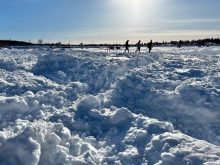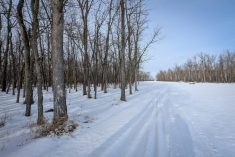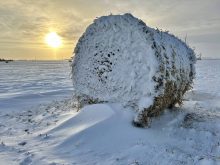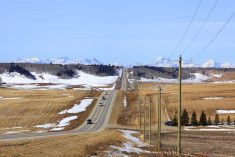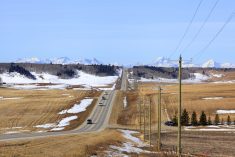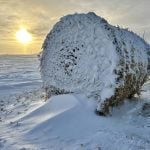This holiday season we’ve been stuck in a quiet but mild weather pattern. While weak systems make for a reliable general forecast, it makes it difficult to get the finer details. For this forecast period, it looks like the quiet weather pattern will continue as the weather models are not showing any big storm systems impacting the Prairies. We should continue our slow cooldown with temperatures during most of this forecast period looking to be near to below average.
The main driving force for our weather during this forecast period will be a very large area of low pressure developing over eastern Canada. The counterclockwise rotation around this feature will create a northwesterly flow across Western Canada. This will open the door for Arctic air to move southwards.
Read Also
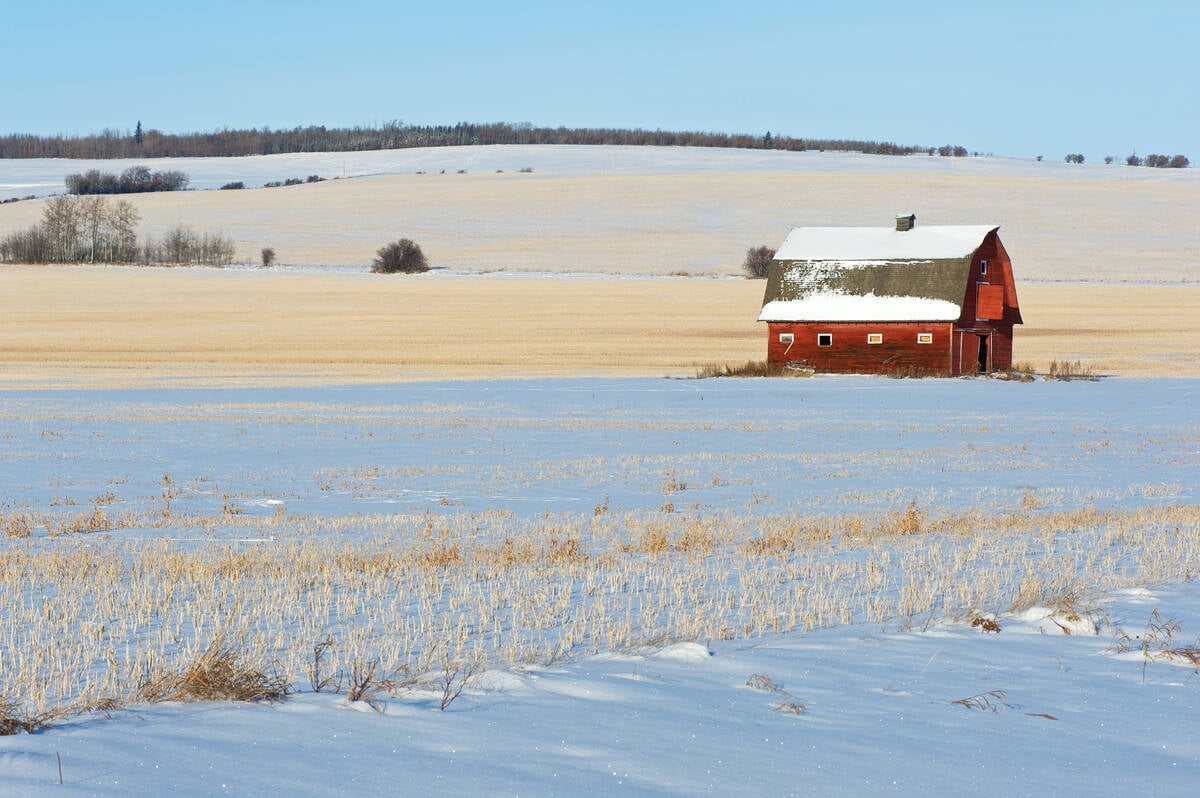
Prairie forecast: Plenty more chances for snow over Holidays
The pattern of Pacific storm system after Pacific storm system looks set to continue for a while longer. We begin this forecast period with a heavy snowfall warning in effect across parts of Alberta.
The first Arctic high is forecasted to slide southeastwards from the Yukon to southern Manitoba by Saturday with a second high forecasted to drop southeastwards early next week. In between these highs, a weak disturbance could bring a little light snow. A second weak disturbance is forecasted to hit parts of the Prairies around the middle of next week.
Alberta
We start off this forecast period with a little unsettled weather across southern and central regions. This is bringing clouds and is kicking off some scattered areas of light snow. Arctic high pressure will begin to slide southwards on Tuesday with the cold air pushing into southern regions by Wednesday.
Expect daytime highs to start in the -15 C range over central and northern regions and to drop to around -20 C by Thursday. Over night lows look to be in the -22 to -26 C. Over southern regions daytime highs will be around -8 C but will begin to fall later today with highs from Wednesday to Friday expected to be around -15 C. Overnight lows will be a little tricky as they are dependent on cloud cover. For areas that clear out, expect lows to be in the -20 C range. Otherwise lows will be around -17 C.
Over the weekend, as an Arctic high departs to the southeast, a weak trough of low pressure is forecasted to move through the province. This feature will likely bring two to three centimetres of light snow to most regions. The trough will also bring in milder air with daytime highs expected to be in the -5 C range by Monday over southern regions and -10 C over northern areas. A second Arctic high is forecasted to drop quickly southeastwards on Tuesday and Wednesday, which will bring a glancing shot of colder air before a second area of low pressure moves in late on Wednesday. Confidence in the part of the forecast is low.
Saskatchewan and Manitoba
It’s a pretty straightforward forecast for these two provinces. Arctic high pressure will begin dropping southeastwards late on Tuesday. This high, while bringing more seasonable mid-winter temperatures, should scour out the low clouds and occasional light snow that’s been plaguing parts of these regions. Expect skies to clear across Saskatchewan on Wednesday and Manitoba on Thursday. With the clearing skies will come colder temperatures. Expect daytime highs in the -14 to -18 C range and overnight lows falling into the -22 to -25 C range.
As the arctic high pulls off to the southeast late in the weekend, a weak trough of low pressure is forecast to drift through. This should bring clouds, occasional light snow, and slightly warmer temperatures. It doesn’t look there will be much in the way of accumulation. Some areas may see a centimetre or two.
Early next week, the weather models are showing a second arctic high dropping southeastwards in the northwesterly flow. This will bring a return to clear skies with daytime highs cooling into the -15 to 18 C range with overnight lows around -24 C.
— Daniel Bezte is a teacher by profession with a B.A. (Hon.) in geography, specializing in climatology from the University of Winnipeg. He operates a computerized weather station near Birds Hill Park, Man. Contact him via email with your questions and comments.





